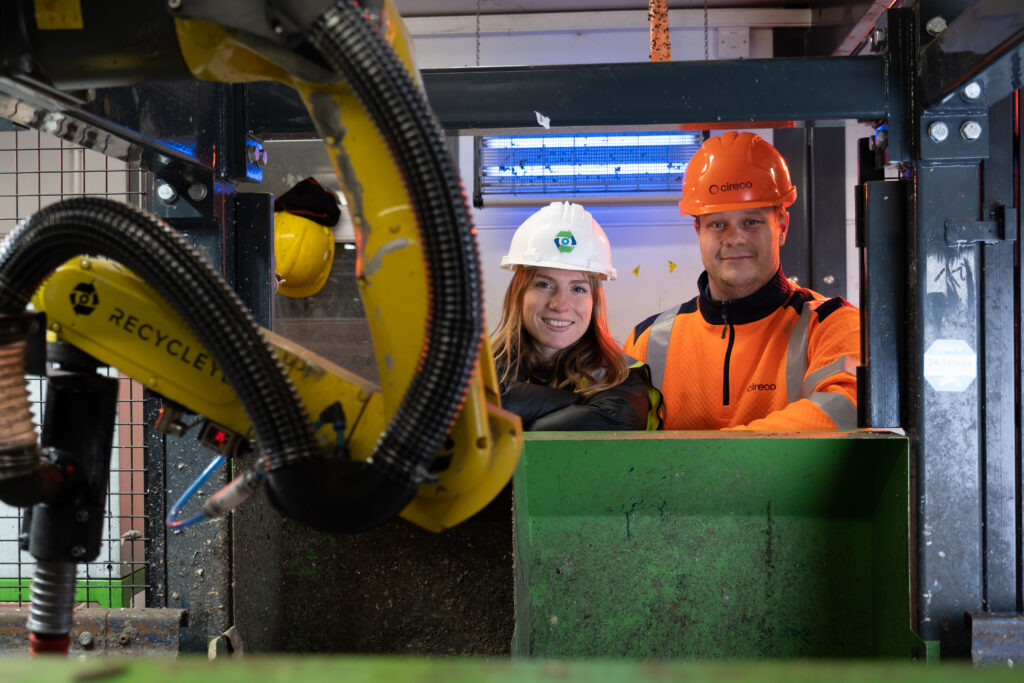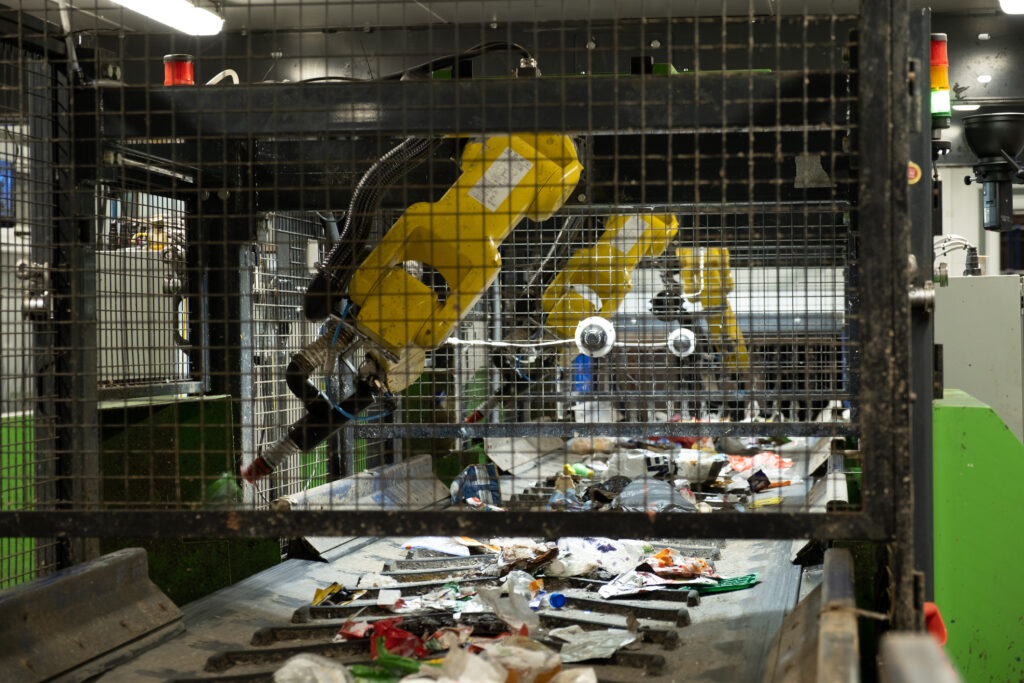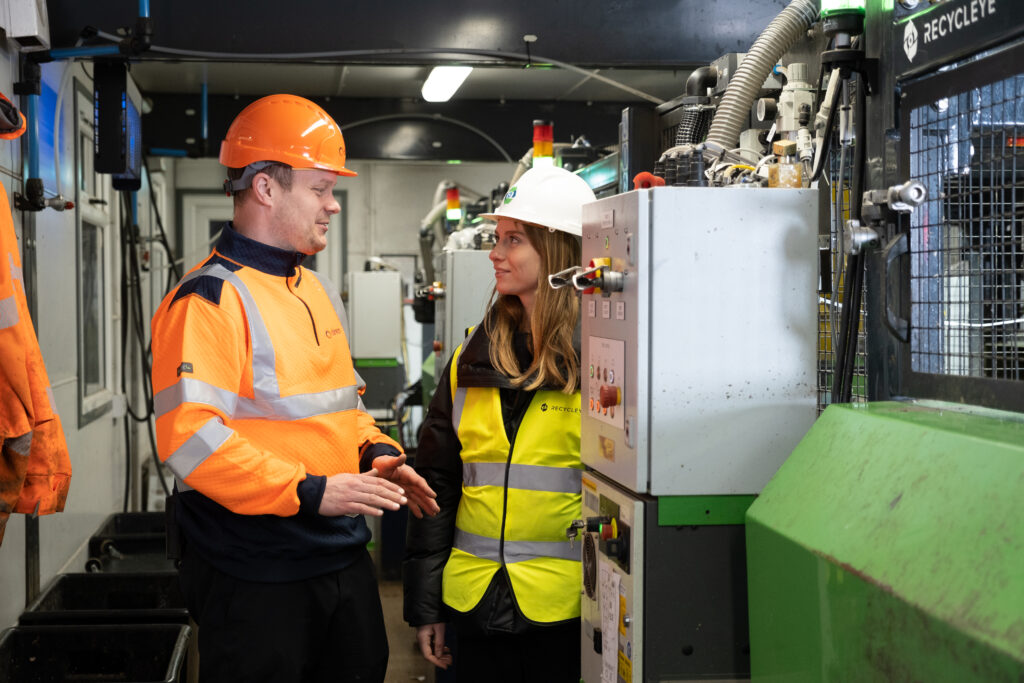Cireco has shared details for the first time about automating the Dunfermline MRF’s residual line with AI-powered waste-sorting robots from Recycleye. Specifically, how the 3 robots have improved recovery of recyclables and adapted to changing composition of the stream since they were installed in September 2022.
Cireco is Scotland’s leading complete resource management service and manages Fife Council’s MRF, which processes 30,000 tonnes of 2D material, 3D material and dry mixed recyclate annually on a 2-shift schedule. Recycleye delivers AI-powered sorting equipment to waste management businesses globally, including robotic pickers and optical sorters.

Prior to September 2022, Cireco had noted that after the MRF’s material had passed through the separation by eddy currents, magnets and NIR optical sorters, the residue belt still contained a large amount of target material, particularly rolling PET and aluminium cans. Hence, the resource company invested in 3 Recycleye robots to automate the line’s quality control and increase recovery of target recyclables, capitalising on their value rather than losing them to landfill.
The robots were retrofitted over the big belt residual line at the back end of the plant, which was previously managed by 3 manual pickers. The systems extract PET bottles and aluminium that have been missed earlier in the plant before the residue from the line is sent to landfill. This fortifies Cireco’s profitability by increasing value extracted from the line, whilst decreasing sorting costs.

In addition to automated recovery of recyclables, Cireco noted the flexibility of the AI technology to adapt to compositional changes. When the robots were initially installed, aluminium cans were a small fraction of the residual line’s throughput, meaning only the last robot on the belt was directed to pick aluminium cans in addition to PET bottles, whilst the remaining 2 robots upstream picked exclusively rolling PET.
However, over the subsequent months, the proportion of aluminium in the stream increased significantly. In response to this change, the AI model directing the 3 robots was reprogrammed by Recycleye so that all 3 robots began picking both target materials.
This equipped Cireco with flexibility to adapt to changes in incoming waste, and to prepare for upcoming regulation changes such as EPR and DRS. It also indicates an opportunity for the wider waste industry forged by AI: remotely recalibrating machinery to align with throughput requirements.

The AI-powered robots are designed and manufactured by Recycleye and comprise a computer vision system which sits atop the residual belt, leveraging a camera and machine learning algorithms to detect each waste item by material and object e.g. aluminium beverage can. This detection information, along with the coordinates of which chute the item should be sorted into, is sent to the corresponding robotic arm, which physically picks and shoots the material accordingly. The Recycleye AI-powered 6-axis waste-sorting robot has been installed over 30 times in MRFs across Europe.
David Goodenough, Service Manager (Corporate Operations and Projects) at Cireco, cites the reason for selecting Recycleye’s robots as “Recycleye is very forward-thinking and worked with us to develop a system that would work for our unique set of materials that we come across and the batch process that we operate.”
As a result of the investment, Cireco has reallocated 6 FTEs on the line (3 per shift) to engineering maintenance roles or to positively pick valuable material from other belts.
“We have experienced a dual benefit: a reduction in the target materials lost to residue and an increase in the quality of material being outputted from other streams,” remarks David. “It’s enabled us to operate the plant on different settings, because the robots pick about 30,000 items per shift consistently, whereas with human operators, there are efficiency peaks and troughs throughout.
david goodenough, Service manager (corporate operations and projects), cireco
This robotics installation at Cireco is a prime example of the flexibility of AI to adapt to compositional and regulatory changes. It displays how Scotland’s waste management businesses are leading the way in innovation to recover more material from being sent to landfill, feeding resources back into the local economy.
Zoe Cook, Technical Sales Manager (UK) at Recycleye